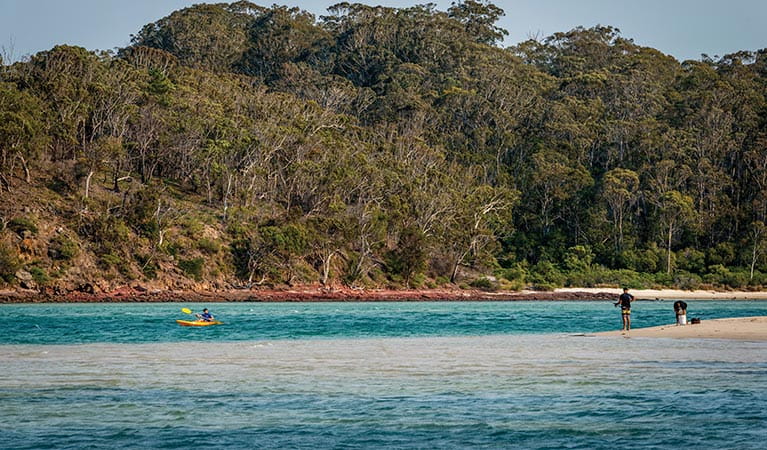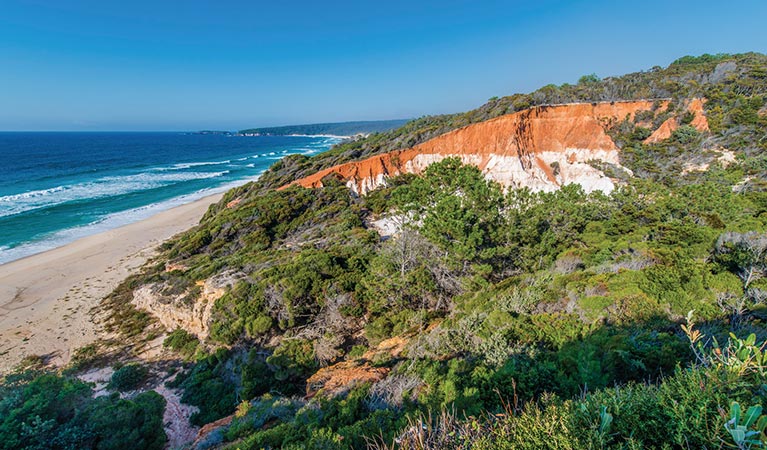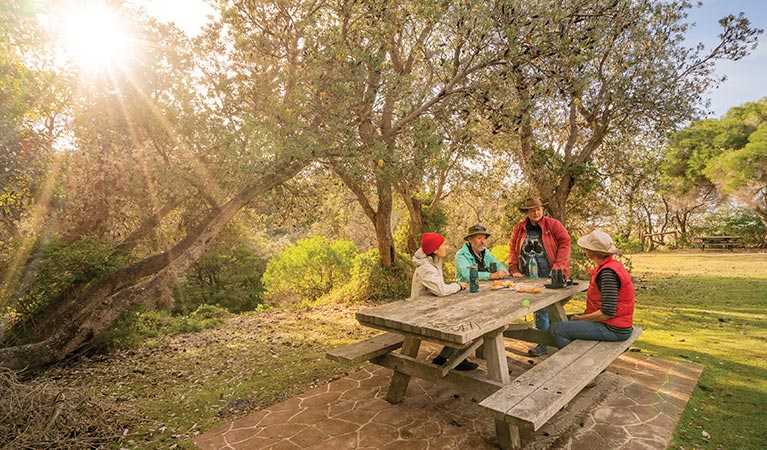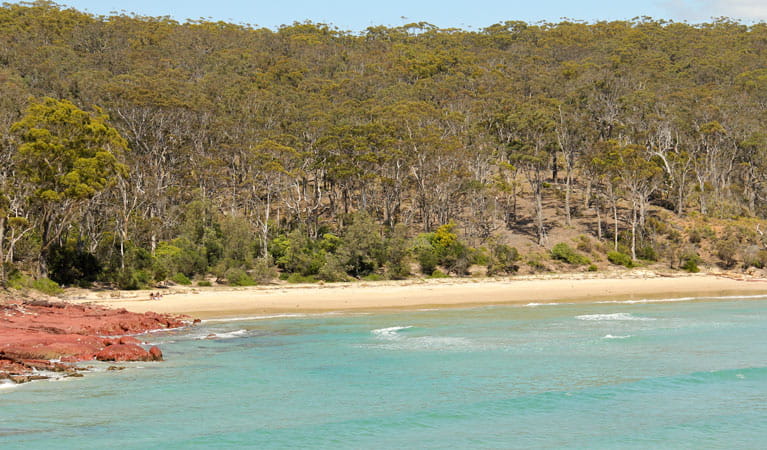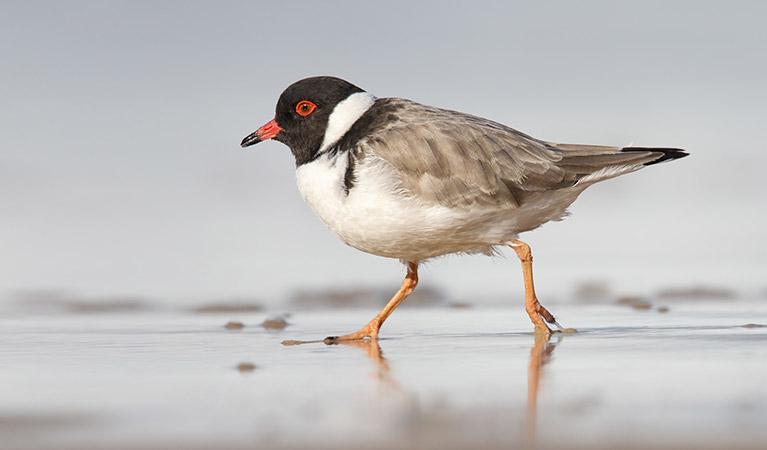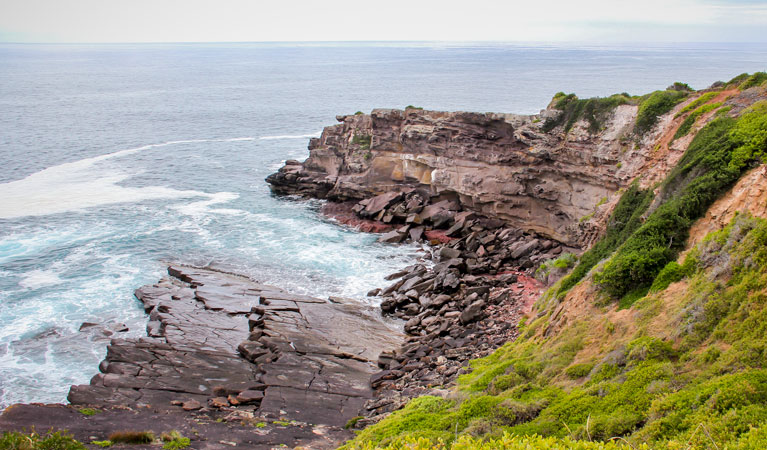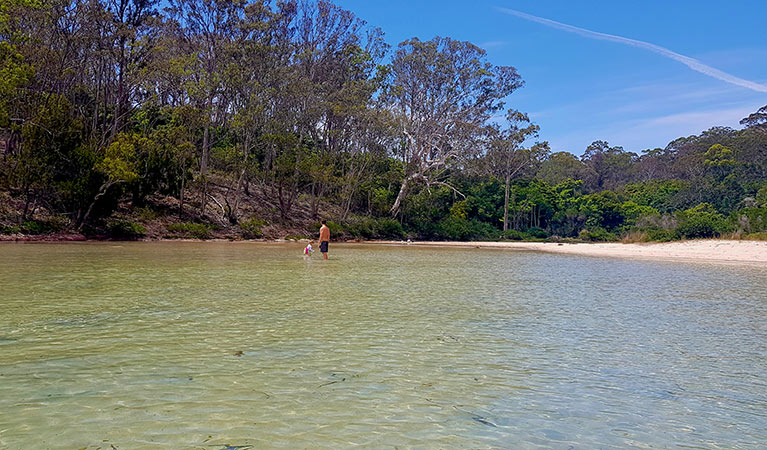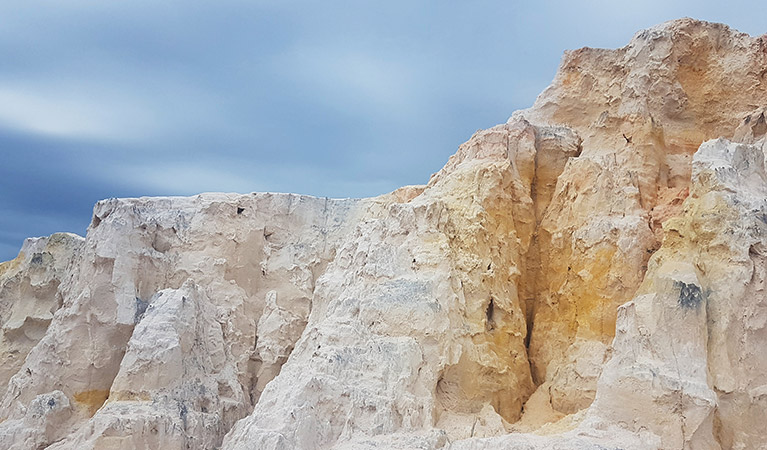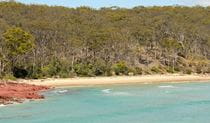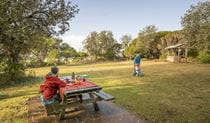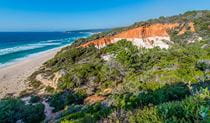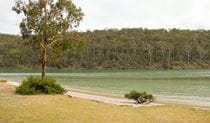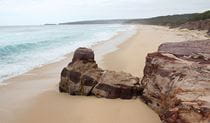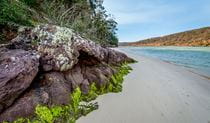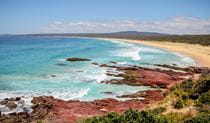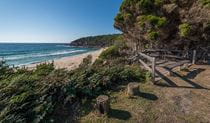Pambula-Haycock area
Beowa National Park
Overview
Pambula-Haycock area is the northern section of Beowa National Park, located between Merimbula and Eden. Explore its sparkling river, fascinating Aboriginal shell middens and secluded beaches.
Read more about Pambula-Haycock area
The park’s Pambula-Haycock area stretches from Pambula Beach to the north head of Twofold Bay. The Pambula river mouth is surrounded on both sides by the national park. Its calm, clear waters make it ideal for kayaking and splashing about with the kids on a hot day.
This area is popular for its pleasant walking tracks that lead you to secluded beaches and headlands. Take a short walk from the carpark to the grassy Severs Beach to see an Aboriginal shell midden carbon dated to 3,500 years old. As you reach the shore, the glistening views of Pambula River will invite you for a swim.
If rocks are your thing, don’t miss The Pinnacles formation—a deep eroded gully of vivid red and white sands. The short loop walk from the carpark will get you there. Walk out to Haycock Point and visit Haystack Rock, an interesting rock formation at the north end of Long Beach.
Haycock Point has some spectacular spots to go whale watching in winter and spring. You’ll see keen fishers casting a line for salmon off Long Beach or Terrace Beach and there’s plenty of bird watching opportunities—look out for the park’s many waterbrids like the hooded plover or the endangered pied oystercatcher.
Pambula’s estuaries are famous for producing oysters. Live like a local and settle in for a picnic on the shores of Haycock Point picnic area with some freshly shucked oysters as you watch the sun set over the Pacific Ocean.
Highlights in this area
Download our app
The free NSW National Parks app lets you download maps and explore parks, things to do and places to stay—all without mobile reception.
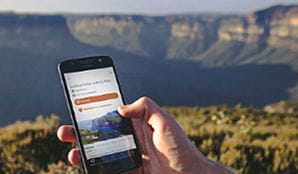
Saving Our Species program
Australia is home to more than 500,000 animal and plant species, many of which are found nowhere else in the world. Saving our Species is a statewide conservation program that addresses the growing number of Australian animals and Australian native plants facing extinction.
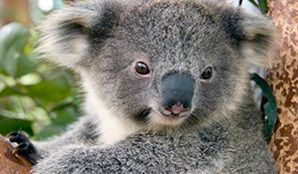
General enquiries
- National Parks Contact Centre
- 7am to 7pm daily
- 1300 072 757 (13000 PARKS) for the cost of a local call within Australia excluding mobiles
- parks.info@environment.nsw.gov.au
Contact
- in Beowa National Park in the South Coast region
The Pambula-Haycock area of Beowa National Park is always open but may have to close at times due to poor weather or fire danger.
-
-
Merimbula office
02 6495 5000
Contact hours: Monday to Friday and some weekends during peak holiday periods, 10am to 3pm. - 47 Merimbula Drive, cnr Sapphire Coast Drive, Merimbula NSW 2548
-
Email: npws.sapphirecoast@environment.nsw.gov.au
-
Merimbula office

